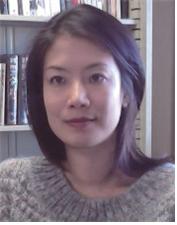March First Revisited: Kojong’s Funerary Procession in 1919 Seoul
| Se-Mi Oh | |

| |
| Name in Latin Alphabet: | Se-Mi Oh |
|---|---|
| Nationality: | USA |
| Affiliation: | University of Wisconsin |
강연 소개
This presentation looks into the momentous mass protest movement that broke out on March 1, 1919. While thousands of people took to the streets in display of modern public awareness and in demand of national independence, the event took place against the backdrop of the carefully-orchestrated funeral procession of the late king Kojong by the Japanese colonial government. In this entangled web of urban infrastructure, colonial governmentality, and the vestiges of the monarchical past, this presentation asks how the funeral was re-staged as a modern spectacle and how it was subsequently narrated through photography and cinema. At the crux of my analysis are the ways in which an age-old monarchical pageantry became an instrument for the narrative strategy of modern history. When a funeral procession was the dead’s journey to a holy place, making the place of the dead relevant in history through the sacrialization by ritual, the eternality of history was turned into the virtual, memory, and nostalgia by photography and cinema. I compare this notion of the cinematic to Ûigwe (The Records of Rites and Ceremonies) of the Chosôn dynasty, and discuss how the depiction of ritual -- repetitive and ephemeral -- became the singularity of event in the freeze frame of photography and in the linear narrative of panoramic cinema.
강연 영상
March First Revisited: Kojong’s Funerary Procession in 1919